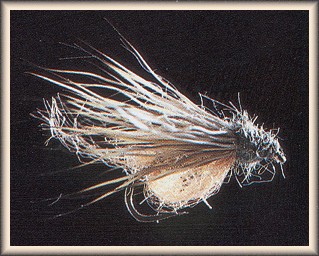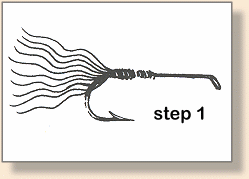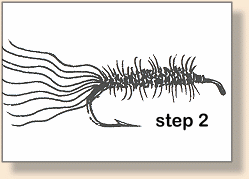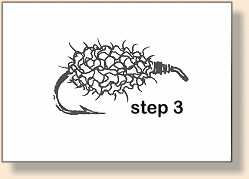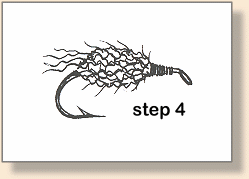|
4. Clip some of the yarn fibers directly on top of
the shank (right in back of the tie-down spot) and let
them trail off the back.
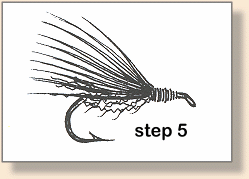
5. Tie in a deer hair wing, the tips extending to the bend
of the hook.
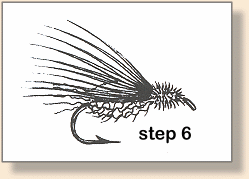
6. Dub a head of fur or wrap a head of marabou fibers.
Whip finish.
Fishing Tip:
The angler should carry the same basic selection for the Emergent
as for the Deep Sparkle Pupa. Brown and Yellow (yellow underbody and
overbody/brown speckled deer hair wing/brown head), Brown and Bright
Green (bright green underbody overbody/brown speckle deer hair wing/brown
head, Ginger (ginger underbody and overbody/light tan deer or elk hair
wing/ginger head), Dark Gray (dark gray underbody and overbody/gray
speckle deer hair/gray head) are the most important color schemes. The
Brown and Orange (orange underbody and overbody/brown speckled deer
hair wing/brown speckled deer hair wing/brown head) version, in a size
8, is a great fly in the West in the fall when the Giant Orange Sedge
appears on our rivers.
My way of fishing the Emergent is simpler, and in my opinion, during
a caddis hatch, it is more effective. The pattern is greased entirely
and floated dead drift (from up, down, or across stream) over rising
trout. The pattern rides half in and half out of the surface film,
the deer hair wing quite visible above the water. Fished like this, the
Emergent is a hackleless dry fly.
All of the other methods, by sinking or moving the fly, knock the
natural air bubbles off of the Antron. Those bubbles, continually
grabbing onto the body or breaking free from it, give the illusion of
a squirming, living insect even when the fly is drifted drag-free
with the current. From the underwater view it mimics not only the
appearance but the movement of the caddisfly pupa.
There is a well-known phrase in fly fishing: Presentation is 90
percent of the secret of success. But there is one case where
the fly overwhelms presentation, and that is during the caddis
hatch. The Emergent Sparkle Pupa, with its shimmering body of
Antron dibers, catches more trout fish wrong than a dry fly or a
drab pupal imitation fished right. The versatility of this
pattern explains its popularity. ~ Gary LaFontaine
Note: For another method of tying this fly, see
Emergent Sparkle Pupa
as tied by Skip Morris.
|

